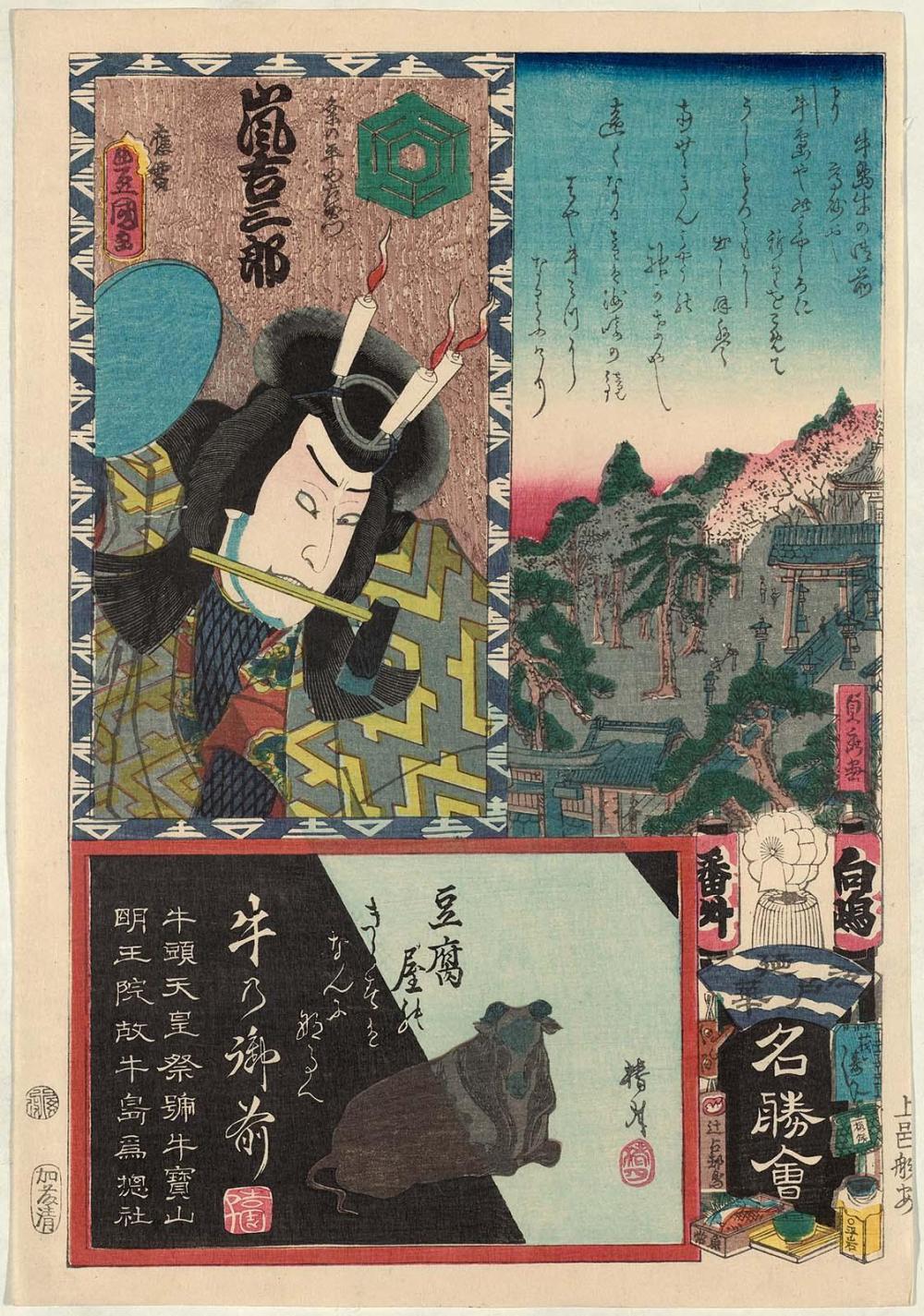Advanced Search 
「江戸廼華名勝会 番外 向島」 「牛島牛の御前」 「粂の平内左衛門 嵐吉三郎」(三代目)

Mukôjima Brigade, Extra (Bangai), Ushi no Gozen Shrine at Ushijima: Actor Arashi Kichisaburô III as Kume no Heinaizaemon, from the series Flowers of Edo and Views of Famous Places (Edo no hana meishô-e)
「江戸廼華名勝会 番外 向島」 「牛島牛の御前」 「粂の平内左衛門 嵐吉三郎」(三代目)
Utagawa Kunisada I (Toyokuni III) (Japanese, 1786–1864)
Other artist: Utagawa Sadahide (Japanese, 1807–1873)
Other artist: Chingetsu (Japanese, active 1860s)
Publisher: Katôya Iwazô (Seibei) (Japanese)
Other artist: Utagawa Sadahide (Japanese, 1807–1873)
Other artist: Chingetsu (Japanese, active 1860s)
Publisher: Katôya Iwazô (Seibei) (Japanese)
Japanese
Edo period
1863 (Bunkyû 3), 8th month
Medium/Technique
Woodblock print (nishiki-e); ink and color on paper
Dimensions
Vertical ôban; 35.9 x 25 cm (14 1/8 x 9 13/16 in.)
Credit Line
William Sturgis Bigelow Collection
Accession Number11.42511
NOT ON VIEW
CollectionsAsia, Prints and Drawings
ClassificationsPrints
DescriptionThe term “flowers of Edo” (Edo no hana) can refer, among other things, to fires. The title panel for each print in this series shows the lanterns and identifying standard (matoi) for one of the brigades of firefighters (hikeshi) assigned to various districts. On the west side of the Sumida River were 48 brigades named for the symbols of the kana syllabary and grouped into 8 numbered groups (1 to 10, minus the bad-luck numbers 4 and 7). On the east side of the river, brigades were numbered and assigned to directional groups. Outlying districts were covered by special brigades, here designated “extra” (bangai). Each title gives the name or number of a brigade, its group, and its district, followed by the kabuki scene chosen to match it.
牛島。
(見立)
牛島。
(見立)
Signed
Ôju Toyokuni ga, in toshidama cartouche (top left); Sadahide ga (top right); Chingetsu (bottom)
応需 豊国画(年玉枠)、貞秀画、椿月
応需 豊国画(年玉枠)、貞秀画、椿月
Marks
Censor's seal: Boar 8 aratame
No blockcutter's mark
改印:亥八改
彫師:なし
No blockcutter's mark
改印:亥八改
彫師:なし
ProvenanceBy 1911, purchased by William Sturgis Bigelow (b. 1850–d. 1926), Boston [see note 1]; 1911, gift of Bigelow to the MFA. (Accession Date: January 19, 2005)
NOTES:
[1] Much of Bigelow's collection of Asian art was formed during his residence in Japan between 1882 and 1889, although he also made acquisitions in Europe and the United States. Bigelow deposited many of these objects at the MFA in 1890 before donating them to the Museum's collection at later dates.
NOTES:
[1] Much of Bigelow's collection of Asian art was formed during his residence in Japan between 1882 and 1889, although he also made acquisitions in Europe and the United States. Bigelow deposited many of these objects at the MFA in 1890 before donating them to the Museum's collection at later dates.
